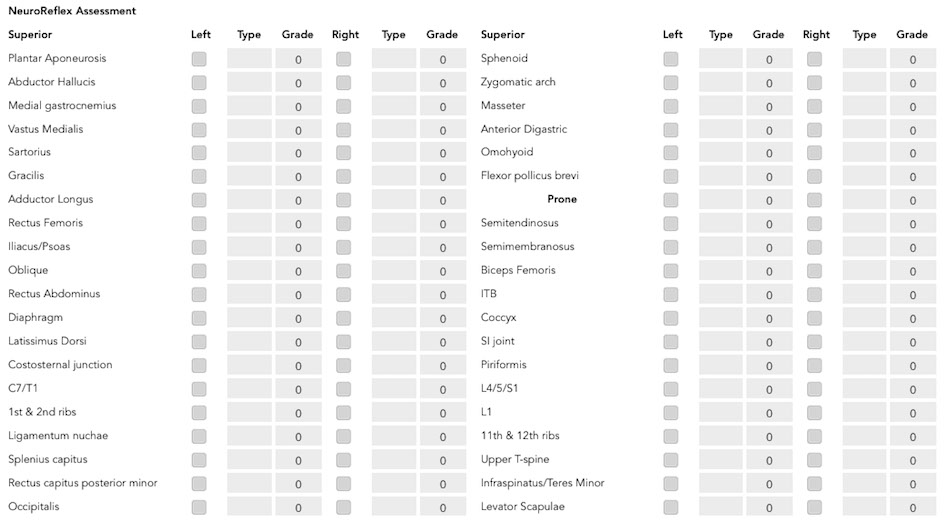When performing the assessment for NeuroReflex the following should be noted:
- Palpate for overly protective reflex with protective barrier
- Compare the same area/structure, right & left at the same time, then back and forth, making a comparison of findings.
- Observe patients’ effort to pull away when you find primitive nociceptive reflexs
- Palpate for a thickened, boggy, full feeling
- There’s difficulty palpating the bony contours
- Observe through your fingers the muscle twitch response
- Often you’ll note crepitus when going across the structure, i.e. ligamentum nuchae. Simply go at a right angle back and forth. Research suggests crepitus is a dural dumping ground created by sympathetic mediated activity in the Autonomic Nervous System (ANS).
- If they appear to be ticklish, check opposite side for mirrored response; if not the same, push a little harder to reassess
Note the following responses from the patient:
- Grasp for your hand to stop you from palpating the area
- Grimace
- Groan/hiss sound like a snake (inspiratory reflex with the tongue against the roof of the mouth)
Note: don’t be overly concerned about an area that the patient says is “tender” but doesn’t elicit any of the 3 G’s.
Positive response from treatment:
- Decrease in pain reflex found in the body on reexamination
- Feeling of calm and relaxation
- Lightheadedness, slight tipsy feeling, sleepy feeling
- Reduction in pain complaint

